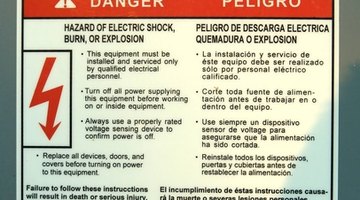Difference Between 3-Prong & 4-Prong Pigtail for Electric Ranges
Electricity is a powerful energy source that must be used with caution. Federal codes ensure safer ways of using this energy. Changes in this code may show up during upgrades of our appliances.
National Electric Code


The National Electric Code (NEC) approved in 1996 requires the use of four-wire cords and receptacles for connecting 240-volt appliances. This includes dryers, electric ranges, wall-mounted ovens and cooktops.
Changes
Older 240-volt receptacles and plugs have three wires, which include two hots to carry the power and one neutral. The new code requires the 240 outlet to use a 4-prong/4-wire plug that includes an extra wire to ground the appliance.
Benefits
The additional grounding wire protects from possible shocks that could travel through the appliance to the user. The ground wire allows an alternative path for electricity to follow if something goes wrong. Using the building's electrical system, errant electricity is sent into the earth.
Making Changes
Because they are "grandfathered" in, the older 3-prong outlet/plugs are still approved for use if they are already installed. However, upgrading them with the new 4-wire system is required if they are changed or replaced. Plugs on older appliances can be replaced with the grounded wiring or plug so that they can still be used in newer construction.
Caution

Have a licensed electrician do the work so that it is done properly. Also, do not try to change from 4-wire to the 3-wire since that would eliminate the protections from shock that the ground wire provides.
References
- "Stanley Basic Wiring: Pro Tips and Simple Steps"; Steve Cory; 2002
Resources
Writer Bio
A former music educator, Rickar J. Thomas was first published in 1997 in the "Music Educators Journal." She graduated magna cum laude from West Virginia State College, earning a Bachelor of Arts in creative writing and music.
Photo Credits
- kitchen image by Ritu Jethani from Fotolia.com
- Close-up image of an electric range heating element image by Alexey Stiop from Fotolia.com
- electrical sticker image by Tijara Images from Fotolia.com
More Articles



